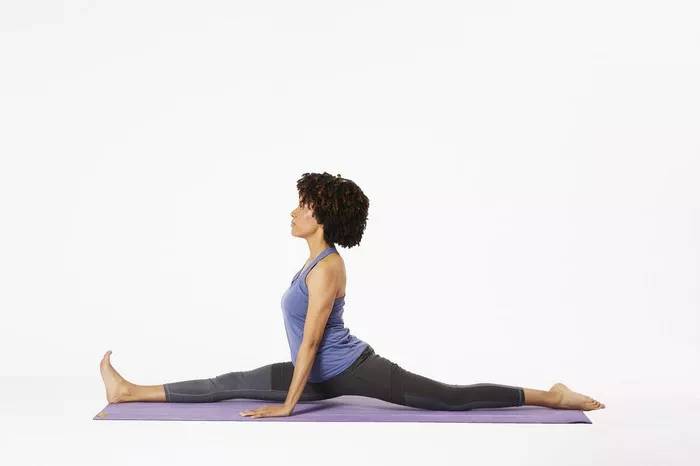In today’s fast-paced, stressful world, many are turning to different spiritual and physical practices to find balance, peace, and clarity. Yoga, in its various forms, has gained immense popularity over the past few decades, with people from all walks of life seeking its benefits. Among the many types of yoga, Kriya Yoga is one that has gained significant attention, particularly because of its emphasis on breathing techniques and meditation to achieve mental clarity and spiritual growth. But the question remains: Does Kriya Yoga really work?
In this article, we will explore the concept of Kriya Yoga, its origins, the techniques involved, and most importantly, whether or not it produces the promised results.
Understanding Kriya Yoga
Kriya Yoga is a spiritual practice that originated in India thousands of years ago and has roots in ancient yogic traditions. The word “Kriya” comes from the Sanskrit word “Kri” meaning “action” or “deed,” and “Ya” meaning “to control” or “to direct.” Therefore, Kriya Yoga can be loosely translated as the “Yoga of Action,” or more specifically, the “Yoga of Energy Control.” This term refers to a set of advanced techniques designed to help practitioners purify the mind and body through specific actions, such as breathing exercises, meditation, and control over the body’s vital energy (Prana).
At its core, Kriya Yoga is centered around the idea that the ultimate goal of life is to realize one’s own divine nature. In simpler terms, Kriya Yoga is a spiritual path that leads to enlightenment and self-realization by awakening the dormant energy within each person.
The practice was popularized in the 20th century by Paramahansa Yogananda, a renowned yogi and spiritual teacher who introduced the principles of Kriya Yoga to the West through his famous book Autobiography of a Yogi. Yogananda claimed that the practice could accelerate spiritual growth, bringing about higher states of consciousness, inner peace, and a direct connection with the divine.
The Key Components of Kriya Yoga
To understand whether Kriya Yoga works, we must first look at the practices and techniques involved. Kriya Yoga is typically taught through a structured series of methods that include:
1. Pranayama (Breathing Techniques)
The most prominent and distinguishing feature of Kriya Yoga is its specific breathing techniques, which aim to control and regulate the flow of Prana (life energy) within the body. Pranayama is the practice of breath control, and it is believed that through proper control of breath, one can achieve mental clarity, emotional balance, and spiritual awakening.
One of the core pranayama techniques in Kriya Yoga is the Kriya Pranayama, which involves a controlled pattern of inhalation, retention, and exhalation. The technique works by directing energy to the brain and the spine, bringing balance and harmony to the nervous system and the mind.
2. Meditation
Meditation is another key aspect of Kriya Yoga. Through meditation, practitioners can achieve mental stillness and enhance their awareness. The practice encourages deep focus on the breath, the chakras (energy centers of the body), or the inner self. By training the mind to remain calm and undistracted, Kriya Yoga practitioners can gain profound insights into the nature of reality and self.
The ultimate aim of meditation in Kriya Yoga is to achieve Samadhi—a state of complete absorption and union with the divine. This deep meditative state is believed to lead to the dissolution of the ego, allowing the practitioner to experience oneness with the universe.
3. Self-Discipline and Purification
Kriya Yoga emphasizes the importance of self-discipline in daily life, as well as the purification of the body, mind, and spirit. Practitioners are encouraged to follow a strict routine, maintain a clean diet, practice moderation, and refrain from excessive indulgence in worldly pleasures. This disciplined approach, coupled with the practice of yoga and meditation, is said to help the practitioner align themselves with higher consciousness.
Purification techniques in Kriya Yoga also involve detoxifying the body through fasting, cleansing, and asanas (yoga postures) designed to increase flexibility, strength, and energy flow. The goal is to remove mental and physical blockages that hinder the flow of energy.
The Benefits of Kriya Yoga
Proponents of Kriya Yoga claim a wide range of benefits, both on a physical and spiritual level. While individual experiences may vary, many practitioners report experiencing the following positive outcomes:
1. Stress Reduction and Mental Clarity
One of the most commonly cited benefits of Kriya Yoga is its ability to reduce stress and increase mental clarity. Through the practice of Pranayama and meditation, the mind is trained to focus and quiet itself. This practice helps to reduce anxiety, emotional turbulence, and negative thinking patterns, leading to a sense of inner peace and calm.
Research on breathing techniques and meditation also supports these claims. Studies have shown that controlled breathing can lower cortisol (the stress hormone) levels and enhance relaxation, leading to better emotional regulation.
2. Spiritual Growth and Self-Realization
Kriya Yoga is often considered a spiritual discipline rather than just a physical exercise. The practice is designed to lead the practitioner toward higher states of consciousness, enabling them to connect with their true nature. Many people who practice Kriya Yoga report having transformative experiences, including feelings of bliss, deep inner peace, and moments of spiritual awakening.
The ultimate aim of Kriya Yoga is Self-realization, which is the direct experience of oneness with the divine or universal consciousness. While this may sound abstract, many practitioners believe that the consistent application of Kriya Yoga can lead to profound shifts in perception and a greater sense of purpose and fulfillment.
3. Improved Physical Health
Although Kriya Yoga is primarily a spiritual practice, the physical benefits are also notable. The Pranayama techniques and asanas help to improve the circulation of oxygen, increase lung capacity, and balance the autonomic nervous system. Practitioners often report feeling more energetic, vibrant, and physically fit as a result of their practice.
In particular, the controlled breathing techniques used in Kriya Yoga are thought to improve oxygenation in the body, which can have wide-ranging health benefits. There is evidence to suggest that regular yoga and breathing exercises can help with chronic conditions such as hypertension, digestive problems, and sleep disorders.
4. Increased Focus and Concentration
Another benefit of Kriya Yoga is improved focus and concentration. By practicing meditation and breath control, practitioners learn to train the mind to remain focused on a single point or task, which can improve their productivity and mental clarity in all aspects of life.
Research has shown that meditation, particularly mindfulness-based practices like those used in Kriya Yoga, can enhance cognitive function and improve memory retention. This is particularly valuable in today’s information-heavy society, where the ability to focus and filter out distractions is essential for success.
Does Kriya Yoga Really Work?
Now, let’s address the most important question: Does Kriya Yoga really work?
The answer is not straightforward because the effectiveness of Kriya Yoga depends on various factors, including the practitioner’s level of commitment, understanding of the techniques, and their personal goals. However, based on extensive anecdotal evidence, personal testimonies, and research studies, there is a strong case for the positive effects of Kriya Yoga.
1. Scientific Validation
Although Kriya Yoga is a spiritual practice, certain aspects of it, such as Pranayama and meditation, have been scientifically studied and shown to have a measurable impact on health and well-being. Many studies have demonstrated the positive effects of deep breathing exercises on reducing stress, lowering blood pressure, and improving overall physical health. Similarly, research on meditation has shown that regular practice can lead to increased levels of happiness, decreased anxiety, and improved cognitive function.
However, Kriya Yoga’s more spiritual aspects—such as achieving self-realization and union with the divine—are difficult to measure scientifically, as they are subjective experiences that vary from person to person. The transformative experiences that practitioners often report are difficult to quantify but remain central to the appeal of Kriya Yoga.
2. Personal Experience
The effectiveness of Kriya Yoga is often best measured by personal experience. Many practitioners testify that the consistent practice of Kriya Yoga has led to profound personal growth, improved physical health, and a deeper connection to their inner selves. These experiences are often described as life-changing, leading individuals to greater self-awareness and peace of mind.
However, it is important to acknowledge that like any spiritual practice, the results of Kriya Yoga may take time to manifest. Some people may experience immediate benefits, while others may need years of consistent practice to see significant results. Therefore, the path of Kriya Yoga requires patience, dedication, and an open mind.
Conclusion
Kriya Yoga offers a powerful set of practices for those seeking personal growth, spiritual awakening, and improved health. Through the control of breath, the discipline of meditation, and the purification of body and mind, Kriya Yoga provides practitioners with tools to reduce stress, enhance mental clarity, and deepen their connection to the divine.
While scientific evidence supports many of the physical and mental benefits of Kriya Yoga, the spiritual aspects of the practice are more difficult to measure. Nevertheless, for many practitioners, the transformative benefits of Kriya Yoga are undeniable. Whether or not Kriya Yoga “works” ultimately depends on the individual’s dedication to the practice, their personal goals, and their openness to the deeper dimensions of the yogic path.
In conclusion, if you are willing to commit to the discipline and practices of Kriya Yoga, and if you are open to the possibility of profound inner change, then yes—Kriya Yoga can indeed work. It has the potential to bring peace, clarity, and spiritual growth, and its effects are as much about personal transformation as they are about physical and mental well-being.
Related Topics:












